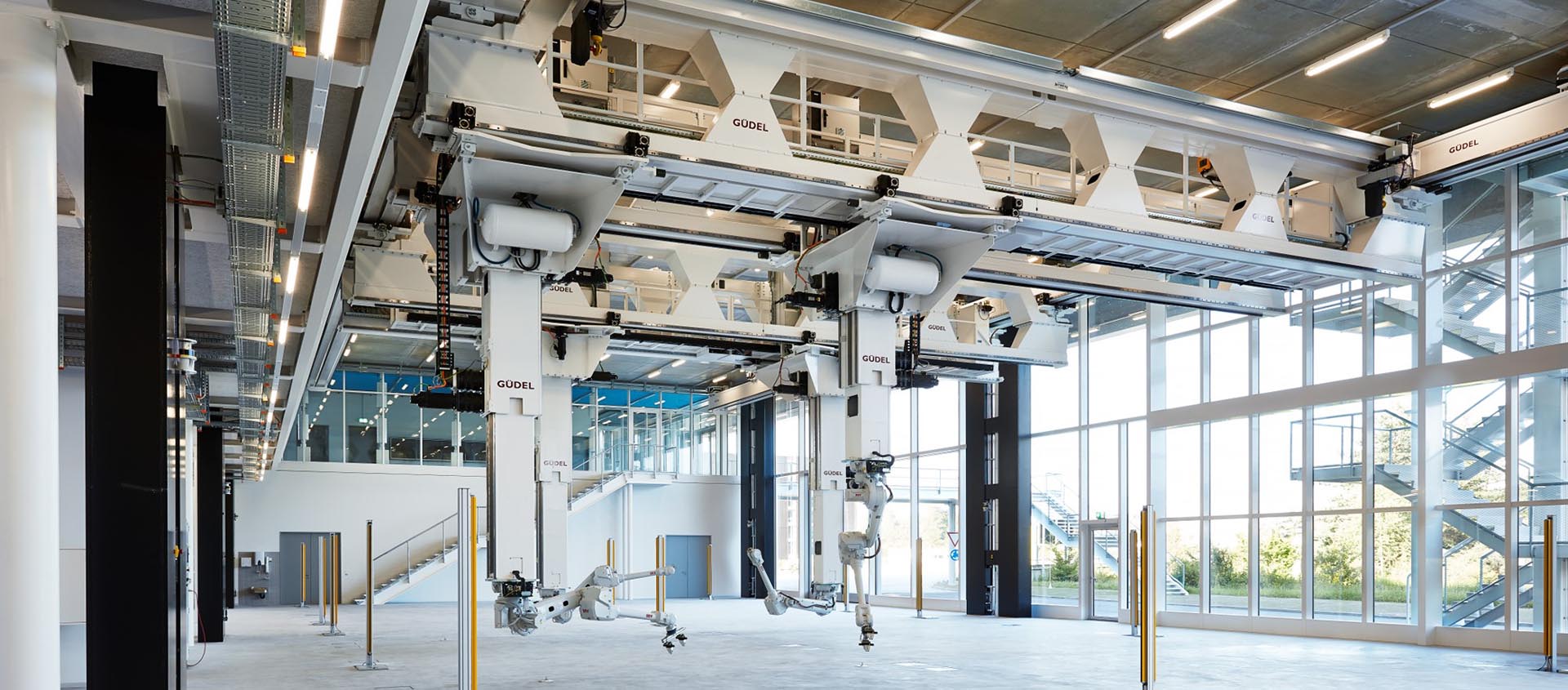ROB|ARCH 2018 will be featuring two lively and engaging panel discussions on two different days.
Panel 1
Time and location: 19:00–20:00, ETH Hönngerberg HPH Building, G1 Auditorium
Following the opening keynote by Chris Luebkeman, The ROB|ARCH 2018 conference will kick of with a panel on the topic of interdiscipliarity and digitalisation in architecture and construction on the evening of Wednesday, September 12th. The panel will be moderated by Judit Solt, editor-in-chief of the Swiss TEC 21 magazine.
Panel members
Margarita Chli is an assistant professor at ETH Zurich, Switzerland, where she leads the Vision for Robotics Lab. She is also the Deputy Director of the Institute of Robotics and Intelligent Systems at ETH Zurich. Originally from Greece and Cyprus, Margarita Chli studied at the University of Cambridge and at the Imperial College London, both in the United Kingdom. Margarita Chli’s interests lie in computer vision for robotics and her work contributed to the first vision-based, autonomous flight of a small helicopter. In 2016 she was featured in Robohub’s list of 25 women in robotics you need to know about and in 2017 she was a speaker at the World Economic Forum in Davos, Switzerland. For her high impact contributions to the development of robotic vision she was awarded the biannual Zonta Prize.
Gudela Grote is Professor of Work and Organizational Psychology at the Department of Management, Technology, and Economics at ETH Zurich, Switzerland. She received her PhD from the Georgia Institute of Technology in Atlanta, USA Her research focuses on the increasing flexibility and virtuality of work and the resulting consequences for the individual and organisational management of uncertainty. In particular, she studies the effects of new technologies on work processes, teamwork and standardisation in high-risk systems, leadership and collaboration in innovation teams, and the management of the employment relationship. She has published widely on the topics organisational behaviour, human factors, human resource management, and safety management, and has consulted with major private and public organisations. She is a former president of the European Association of Work and Organisational Psychology and a fellow of the Society for Industrial and Organisational Psychology.
Fabio Gramazio is an architect with multidisciplinary interests ranging from computational design and robotic fabrication to material innovation. In 2000, he founded the architecture practice Gramazio Kohler Architects in conjunction with his partner Matthias Kohler, where numerous award-winning designs have been realised. Current projects include the design of the NEST building of Empa and Eawag, a future living and working laboratory for sustainable building construction. Opening also the world’s first architectural robotic laboratory at ETH Zurich, Gramazio Kohler’s research has been formative in the field of digital architecture, setting precedence and de facto creating a new research field merging advanced architectural design and additive fabrication processes through the customised use of industrial robots. This ranges from 1:1 prototype installations to the design of robotically fabricated high-rises. The recent research is outlined and theoretically framed in the book “The Robotic Touch: How Robots Change Architecture”.
Hanif Kara is a practicing Structural Engineer and Professor in Practice of Architectural Technology at the Graduate School of Design, Harvard. His work is recognized as being linked with the research and education areas of design. He co-tutored a Diploma Unit at the Architecture Association, London from 2000 to 2004 and was Visiting Professor of Architectural Technology at KTH Stockholm from 2007 to 2012.As Design Director and co-founder of AKTII (est 1996), his particular ‘design-led’ approach and interest in innovative form, material uses, and complex analysis methods have allowed him to work on numerous award-winning, pioneering projects.The practice has won over 250 design awards including the RIBA Stirling Award for the Peckham Library, London in 2000 and for the Sainsbury Laboratory, Cambridge in 2012 as well as the RIBA Lubetkin Prize for the UK Pavilion at Shanghai Expo in 2010.
Shiho Kawashima is a Professor of Civil Engineering and Engineering Mechanics at Columbia University. She is one of the “young game changers, movers, and makers” named to the annual Forbes 30 Under 30 list in the Science category in 2015. Her work is in experimental cement and concrete research, which aims to tie nano-/microstructural behavior to macroscale structural response. She specializes in cement rheology, particularly in the development of innovative measurement techniques to further the understanding of the structural and temporal evolution of the fresh-state microstructure of cementitious systems. She is also interested in nanocomposites, including the integration of nanomodification with the use of supplementary cementitious materials to aid in the design of sustainable infrastructural materials.
Chris Luebkeman‘s interest in the built environment blossomed early, propelling him to pursue a multi-faceted education, beginning with engineering and culminating in a Doctorate in Architecture from ETH in Zurich, a city to which he remains deeply connected. Chris gained valuable experience as the protégé of esteemed Spanish Architect, Santiago Calatrava. But, subsequently he turned to his other love, education, by accepting teaching positions at several prestigious universities. In 1999, Chris joined Arup as the Co-Director for Research and Development. A couple of years later, he formed the Foresight, Innovation and Incubation team, which has evolved to its present form as Foresight + Research + Innovation


